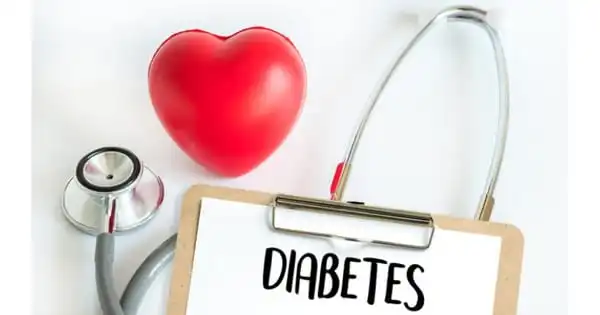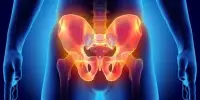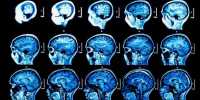Excessive weight gain during pregnancy is on the rise worldwide, contributing to an increase in the prevalence of gestational diabetes mellitus (GDM). GDM is frequently associated with pregnancy and infant-related problems. Exercise on a regular basis may have the potential to prevent GDM. However, the evidence for the effectiveness of exercise during pregnancy as a risk reduction intervention is unclear.
Exercising during pregnancy has numerous advantages to the child. According to new research, exercise may also help reduce the risk of type 2 diabetes in children. Researchers discovered how SOD3, a critical protein released by the placenta after exercise, promotes offspring metabolic health and mitigates the effects of mother obesity and bad nutrition.
A new study found that maternal activity during pregnancy improves the metabolic health of offspring, even if the mother is obese or follows a high-fat diet. Physical activity by the mother causes the placenta to secrete the important protein SOD3, which lowers the risk of diabetes in the offspring. The findings of the paper established the mechanisms underlying this process. The results were published in the Journal Diabetes.
With the rise in maternal obesity, a disturbing cycle is building in which diabetes risks are passed down from generation to generation. It is a vital and serious medical challenge to break this loop.
Joji Kusuyama
A worrying trend
The prevalence of maternal obesity and type 2 diabetes is increasing. Obesity affects more than 30% of women of childbearing age in Western and Asian countries. Meanwhile, by 2045, 630 million individuals are predicted to have type 2 diabetes. Children born to obese moms or mothers with type 2 diabetes are at a higher chance of developing diabetes, even if they live healthy lifestyles.
“With the rise in maternal obesity, a disturbing cycle is building in which diabetes risks are passed down from generation to generation,” says Joji Kusuyama, assistant professor at Tohoku University’s Interdisciplinary Institute for Frontier Sciences (FRIS) and main author of the study. “It is a vital and serious medical challenge to break this loop.”
In the research group with Kusuyama was Laurie Goodyear, Nathan Makarewicz, Brent Albertson, Ana Alves-Wagner, Royce Conlin, Noah Prince, Christiano Alves, Krithika Ramachandran, and Michael Hirshman from the Joslin Diabetes Center; Chisayo Kozuka from RIKEN’s Center for Integrative Medical Sciences; Toshihisa Hatta from Kanazawa’s Medical University; Yang Xiudong and Yang Xia from the University of Texas at Houston; and Ryoichi Nagatomi from Tohoku University’s Graduate School of Biomedical Engineering.
Previously, the researchers demonstrated that exercise during pregnancy has significant benefits for an offspring’s metabolic health, demonstrating that placenta-derived SOD3, or supuroexide dismutase 3, plays an important role in passing the benefits of maternal activity to the offspring. Based on this, the researchers set out to discover how SOD3 protects the detrimental effects of obesity from being handed down from mother to child, and discovered that SOD3 prevented high-fat diet-induced anomalies in the offspring’s glucose metabolism.

The link between maternal and childhood obesity
Histone methylation is critical in epigenetic modification, which is defined as heritable alterations to DNA strands that do not impact the inherited base pairs. The methyl group (-CH3) binds to an amino acid in the tail of histone proteins that wrap DNA, sometimes activating and sometimes suppressing gene expression.
When a woman consumes a high-fat diet, histone H3 trimethylation H3K4me3 decreases in the fetal liver and inhibits the production of glucose metabolism genes. The researchers discovered that this is driven by two factors. Reactive oxygen species (ROS) — oxygen in a reactivated and activated state that supports the body’s metabolism and cellular operations — become high. Meanwhile, WDR82, a crucial protein that regulates histone methyltransferase, becomes oxidative, limiting protein functions.
Maternal activity reverses the negative effects of a high-fat diet on an offspring’s metabolism. Placental SOD3 is required for the beneficial benefits of maternal exercise on children, according to genetic manipulation.
The study also emphasized the need of exercise in combating this. When the researchers administered N-acetylcysteine (NAC), an antioxidant that improves liver performance, into the fetal liver, the results of SOD3 were not replicated. This shows that the naturally created SOD3 during pregnant exercise is critical for the offspring’s metabolic health.
Implications for the future
Because exercise is simple and inexpensive, encouraging women to exercise could help reverse the worrying rates of obesity and type 2 diabetes. Kusuyama believes that the benefits of SOD3 go beyond metabolism. “This protein may have broader effects on other organs in the infant. We are currently investigating the changes in placental tissue caused by SOD3 that may have long-term benefits for infants.”
The authors emphasize that the study is still at the preclinical stage and that its application to humans requires additional research. Furthermore, several components of the signaling system need to be investigated further.















